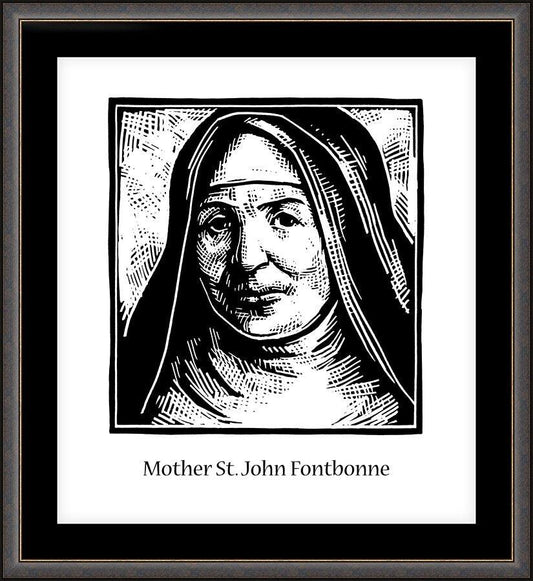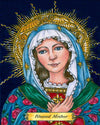Jeanne Fontbonne wa born 3 March 1759 at Bassen-Basset, velay, France. She died November 22, 1843 in Lyon. She was more commonly known by her name in religion Mother St. John Fontbonne. She was a French nun, superior-general of the Sisters of St. Joseph of Lyon, and regarded as second foundress of her order.
In 1778 she entered a house of the Sisters of St. Joseph which had just been established at Monistrol (Haute-Loire) by Bishop de Gallard of Le Puy. The following year she received the habit. On her election, six years later, as superior of the community, Mother St. John, as she was now called, co-operated with the founder in all his undertakings, and aided in the establishment of a hospital.
At the outbreak of the French Revolution she and her community followed Bishop de Gallard in refusing to sign the Oath of Civil Constitution of the Clergy. Forced to disperse her community, she remained until she was mobbed, and the convent taken possession of in the name of the Commune. She returned to her father's home, and then imprisoned at Saint-Didier. Unable to regain possession of her convent at Monistrol, she and her sister, who had been her companion in prison, returned again to their father's house.
Twelve years later (1807), Mother St. John was called to Saint-Étienne as head of a small community of young girls and members of dispersed congregations, who at the suggestion of Cardinal Fesch, Archbishop of Lyon, were now established as a house of the Sisters of St. Joseph. She restored the asylum at Monistrol, repurchased and reopened the former convent, and on April 10, 1812 the congregation received Government authorization. In 1816 Mother St. John was appointed superior general of the Sisters of St. Joseph, and summoned to Lyons to found a general mother-house and novitiate, which she accomplished after many years.
During the remainder of her life she was busied in perfecting the affiliation of the scattered houses of the congregation, which had been formally decreed in 1828. She also established over two hundred new communities. She sent a small group to the United States in 1836, and kept in constant correspondence with them.
"Excerpts from Rivaxy, Life of Rev. Mother St. John Fontbonne (New York, 1887).




















